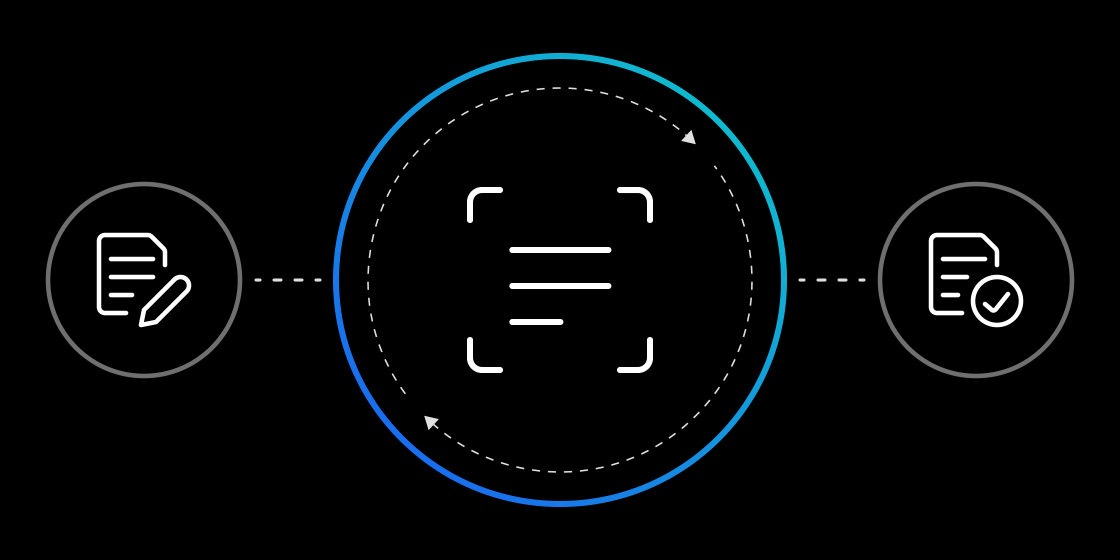In the ever-evolving landscape of optical character recognition (OCR) technology, significant strides have been made over the past decade. OCR has transformed from simple text recognition to a more sophisticated level of semantic understanding. This article explores the latest advancements in OCR, highlighting the transition from recognizing text to comprehending its meaning.
The Evolution of OCR
Early OCR Systems
The journey of OCR technology began with the simple task of recognizing printed or handwritten text from scanned documents. Early OCR systems primarily focused on character recognition and layout analysis. These systems were limited in their ability to understand context, making them suitable for basic data entry tasks but not for more complex applications.
Text Recognition
Text recognition has been a fundamental aspect of OCR for many years. Traditional OCR software excels at accurately converting printed text into editable digital formats, such as Word documents or plain text files. However, this approach falls short when dealing with unstructured data or documents with intricate layouts.
The Rise of Machine Learning
The integration of machine learning techniques has revolutionized OCR. With the advent of neural networks, OCR systems can now process images and documents with unprecedented accuracy. Convolutional Neural Networks (CNNs) have proven to be particularly effective in extracting text from images, making OCR a valuable tool in various industries, from finance to healthcare.
Beyond Text Recognition
Layout Understanding
One of the notable advancements in OCR is the capability to understand document layouts. Modern OCR engines can identify headings, paragraphs, tables, and other structural elements within a document. This improved layout analysis enhances the accuracy of text extraction and document conversion.
Handwriting Recognition
OCR has expanded its horizons to include handwriting recognition. This is particularly valuable in fields like healthcare, where handwritten patient records are common. Advanced OCR systems can accurately convert handwritten notes into digital text, improving data accessibility and searchability.
Multilingual Support
With globalization, the need for OCR systems to support multiple languages has grown. Today’s OCR software can recognize and process text in a wide range of languages, making it indispensable for businesses and organizations with a global presence.
Semantic Understanding
Contextual Analysis
Semantic OCR goes beyond recognizing individual words. It involves understanding the context in which words and phrases appear. By analyzing surrounding text and graphics, OCR systems can infer the meaning of the content. This is particularly valuable when dealing with documents that require comprehension rather than simple data extraction.
Natural Language Processing (NLP)
The integration of NLP techniques into OCR has been a game-changer. NLP enables OCR systems to perform sentiment analysis, entity recognition, and summarization. This means OCR can not only extract information from documents but also provide insights into the sentiment and key entities mentioned in the text.
Improved Data Extraction
Semantic understanding also extends to structured data extraction. OCR systems can now identify specific data points within documents and link them to relevant databases. For instance, in the financial sector, OCR can extract transaction details from invoices and update accounting software automatically.
Real-World Applications
Document Management
Semantic OCR has revolutionized document management systems. Businesses can now organize, search, and retrieve documents with greater efficiency. This technology simplifies compliance with regulations, reduces manual data entry errors, and enhances overall productivity.
Healthcare
In the healthcare sector, semantic OCR plays a crucial role in digitizing patient records. It not only converts handwritten notes into digital format but also helps in extracting medical codes, patient demographics, and clinical insights from medical documents.
Legal Industry
Law firms benefit from OCR’s semantic capabilities by quickly extracting relevant information from legal contracts, court documents, and case files. This streamlines legal research and enhances decision-making processes.
Challenges and Future Directions
While OCR has made remarkable progress, challenges persist. Handling documents with complex layouts or poor image quality remains a concern. Moreover, ensuring the privacy and security of extracted data is an ongoing challenge, especially in sensitive industries like healthcare and finance.
The future of OCR is promising. Continued advancements in artificial intelligence, deep learning, and computer vision are expected to further enhance OCR’s capabilities. Researchers are working on developing OCR systems that can handle handwritten text with even greater accuracy and expand semantic understanding across various languages and domains.
Conclusion
The journey of OCR from simple text recognition to semantic understanding has transformed the way we interact with documents. It has become an invaluable tool in industries ranging from finance to healthcare, improving efficiency and productivity. As OCR technology continues to evolve, we can expect even more sophisticated solutions that bridge the gap between data extraction and true comprehension, unlocking new possibilities for businesses and organizations worldwide.

